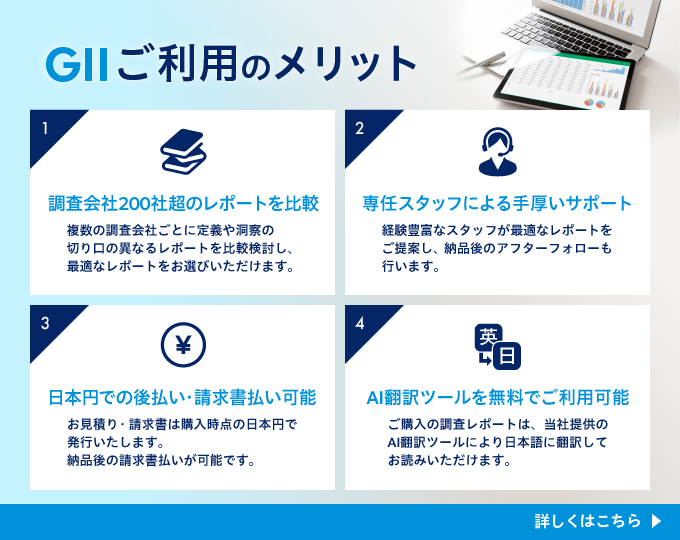
|
市場調査レポート
商品コード
1839062
細胞増殖市場:細胞タイプ、技術、用途、エンドユーザー別-2025-2032年世界予測Cell Expansion Market by Cell Type, Technology, Application, End User - Global Forecast 2025-2032 |
||||||
カスタマイズ可能
適宜更新あり
|
|||||||
| 細胞増殖市場:細胞タイプ、技術、用途、エンドユーザー別-2025-2032年世界予測 |
|
出版日: 2025年09月30日
発行: 360iResearch
ページ情報: 英文 184 Pages
納期: 即日から翌営業日
|
概要
細胞増殖市場は、2032年までにCAGR 8.51%で401億8,000万米ドルの成長が予測されています。
| 主な市場の統計 | |
|---|---|
| 基準年2024 | 209億米ドル |
| 推定年2025 | 227億2,000万米ドル |
| 予測年2032 | 401億8,000万米ドル |
| CAGR(%) | 8.51% |
細胞増殖の現状と戦略的重要性の簡潔なイントロダクション
細胞培養は生物学、工学、臨床応用の交差点に位置し、細胞治療の拡張性、創薬ワークフローの堅牢性、バイオバンク業務の信頼性を支えています。上流の培養技術、プロセス分析、自動化の進歩は、一次リンパ球や多能性集団などの細胞を拡大するスループットと再現性を総体的に向上させました。その結果、研究室のワークフローは、職人的なベンチ技術から、トランスレーショナル・パイプラインをサポートする、より標準化されたハイスループット・アプローチへと移行しつつあります。
このシフトは、一貫した製品の品質とトレーサビリティが最も重要である臨床需要と規制上の期待という2つのプレッシャーによって推進されています。その結果、治療開発、再生医療、基礎研究に携わる企業は、スケールアウト戦略やスケールアップ戦略との互換性を確保するために、インフラやサプライヤーとの関係を再評価しています。細胞生物学と工学設計の相互作用は、依然として中心的なものです。装置の選択、培養形式、操作プロトコールは、収量や表現型だけでなく、下流の処理や規制遵守をも形成します。
さらに、学術研究機関、バイオテクノロジー企業、製造受託機関、製薬企業間の連携も強まっています。このようなパートナーシップは、プロセスのバリデーションにおけるギャップを埋め、作業時間を短縮し、発見から臨床までのタイムラインを加速することに焦点を当てています。要するに、細胞増殖はもはや周辺的な活動ではなく、多くの細胞ベースのイノベーションの実現可能性と競合を左右する戦略的能力なのです。
細胞増殖のエコシステムを再構築し、戦略的方向転換を促す変革的シフト
技術的、規制的、商業的な力が収束し、業務上の優先事項が再定義されつつあるため、細胞を拡大する情勢は急速に進化しています。自動化とクローズドシステムプラットフォームが手作業に取って代わり、汚染リスクを減らし、再現性を向上させています。同時に、シングルユースバッグシステムと次世代バイオリアクターは、探索、トランスレーショナル、製造の各環境において、より柔軟な展開を可能にしています。このような技術的なシフトは、より高いスループットと運用上のばらつきの低減というメリットを享受するために、施設レイアウト、資本配分、人材要件の再考を組織に促しています。
規制当局の期待も成熟しつつあります。規制当局はプロセス管理、文書化、比較可能性をますます重視するようになり、標準化された培養フォーマットや検証済みプラットフォームの採用を促しています。これと並行して、自己細胞療法と同種細胞療法の治療上の焦点は、スケール、タイムライン、サプライチェーン・ロジスティクスに異なる要求を突きつけ、機器や消耗品の選択に影響を及ぼしています。市場参入企業も既存企業も同様に、ハードウェア、ソフトウェア、分析サービスを組み合わせてエンドツーエンドのプロセスを可視化する統合ソリューションに投資しています。
最後に、データ主導の意思決定は、プロセスの最適化に不可欠なものとなりつつあります。リアルタイムのセンサー、インライン分析、自動化されたフィードバック制御を取り入れることで、プロセスの理解が深まり、より予測可能な結果が得られるようになっています。このような変革的なシフトは、組織全体の戦略的方向転換を促し、モジュール化、相互運用性、パートナーシップに重点を置くことで、テクノロジーの採用を加速し、臨床応用までの時間を短縮します。
2025年の米国関税がサプライチェーン、調達戦略、運用コストに与える累積的影響の評価
2025年に実施された最近の関税措置により、細胞増殖ワークフローで使用される機器、消耗品、試薬の調達とサプライチェーン計画に新たな変数が導入されました。国境を越えたサプライチェーンに依存していた組織は、輸入コスト増加のリスクを軽減するために、ベンダー選定基準を見直し、代替調達戦略を検討し、在庫方針を評価しなければならなくなりました。この関税措置により、経営リーダーは重要な投入資材の総陸揚げコストを検討し、サプライヤーの多様化を強化して単一ソースの脆弱性を最小化する必要に迫られました。
これを受けて、一部の利害関係者はオンショアリングの取り組みを加速し、国内メーカーとの戦略的パートナーシップを模索しました。このような調整には、特に関税が調達の意思決定に重大な影響を及ぼす大型設備購入のための、資本支出時期の見直しが伴っています。同時に、調達チームは研究開発部門や製造部門とより緊密に連携し、プロセスの堅牢性や規制遵守の面で最高の価値をもたらす購入を優先しています。
関税はまた、サプライチェーンの透明性とシナリオ・プランニングの重要性を浮き彫りにしました。供給リスクの枠組みを確立している企業は、より迅速に緩和策を実施することができたが、そのような仕組みを持たない企業は、リードタイムの長期化と予定外のコスト圧迫を経験しました。今後、企業は、供給の近接性とサプライヤーの能力のバランスをとるハイブリッド・アプローチを維持し、貿易政策のシフトに直面しても戦略的セル拡大能力が回復力を維持できるようにする可能性が高いです。
多様な使用事例における需要促進要因、技術適合性、エンドユーザーの優先順位を明らかにする主要なセグメンテーションの洞察
細胞の種類、技術、用途、エンドユーザーというレンズを通して細胞増殖を検証することで、購買決定や業務設計に影響を与える差別化されたニーズが明らかになります。細胞の種類に基づくと、幹細胞とT細胞は対照的であり、培養条件、スケール、表現型の安定性に対する要求が明確になります。幹細胞の増殖は、フィーダーを使わない条件や、分化の合図を厳密に制御することを優先することが多いが、T細胞の増殖は、活性化プロトコール、サイトカイン調節、機能的効力に重点を置きます。技術面では、バッグエクスパンション、バイオリアクター、培養フラスコ、ウェルプレートのいずれを選択するかは、スループット、プロセスモニタリング能力、自動化の容易さに影響します。臨床や製造の場面では、密閉バッグシステムやスケーラブルなバイオリアクターが好まれ、一方、初期段階の研究やハイスループットスクリーニングでは、フラスコやウェルプレートが依然として定番です。
アプリケーションの違いは、技術と操作の選択をさらに洗練させる。アプリケーションに基づくと、優先順位は細胞バンク、免疫療法、再生医療、研究開発で異なります。研究開発では、薬物スクリーニングと毒性学研究に細分化され、スループット、再現性、アッセイ適合性に対するニーズが分かれます。エンドユーザーのタイプは、調達やサービスモデルにも影響する:エンドユーザーによって、学術研究機関は柔軟性と費用対効果を優先し、バイオテクノロジー企業はスピードとトランスレーショナル能力を重視し、製造受託機関は検証されたスケーラブルなシステムを要求し、製薬会社は規制上の期待や大規模な生産スケジュールに沿った統合ソリューションを求める。これらのセグメンテーションを総合すると、技術革新、投資、サービスモデルが、細胞増殖のどの分野に最も影響を与えるかが明らかになります。
導入とインフラ投資に影響を与える地政学的、規制的、能力的差異を強調する地域的洞察
地域力学は、組織が細胞増殖にどのようにアプローチするかにおいて決定的な役割を果たし、調達の選択、規制戦略、パートナーシップモデルを形成します。南北アメリカでは、細胞治療への旺盛な投資と臨床施設の広範なネットワークが、拡張性のあるプラットフォームと高品質のサプライチェーンへの需要を喚起し、産学センター間の連携を促しています。欧州・中東・アフリカでは、規制状況の多様化が進んでおり、ハーモナイゼーションの取り組みと各国固有の要件が共存しているため、企業は国境を越えた臨床戦略を追求しながらも、多様なコンプライアンス・ニーズに対応できる柔軟なテクノロジーの導入を促しています。アジア太平洋地域は、急速な生産能力増強、強力な製造エコシステム、積極的な技術導入を特徴としており、地域のサプライヤーが急増し、コスト競争力のあるスケーラブルなソリューションが重視されています。
こうした地域差は、人材の確保、資本アクセス、インフラの準備状況にも影響します。研究から臨床製造への移行には、プロセスバリデーションや品質システムにおいて地域ごとの能力が必要とされることが多く、そうした能力が集中する地域のハブが出現しつつあります。さらに、地域ごとの調達行動は、貿易政策、関税制度、国内製造へのインセンティブに影響され、その結果、サプライヤーのランドスケープやパートナーシップの優先順位が変化します。こうした地域パターンを認識することで、企業は展開戦略を調整し、適切なテクノロジーパートナーを選択し、地域の規制上の期待や運用実態に沿った投資の優先順位をつけることができます。
競合のポジショニング、戦略的重点分野、バイヤーや協力者にとって重要なパートナーシップモデルを明らかにする主要企業の競合考察
細胞増殖エコシステムの主要企業は、統合ソリューション、戦略的パートナーシップ、自動化と分析への投資を通じて差別化を図っています。一部のベンダーは、プラットフォームの相互運用性と検証済みのプロトコルを強調し、予測可能な性能と規制上のサポートを必要とする受託製造業者や製薬パートナーを惹きつけています。また、洗浄バリデーションの負担を軽減し、研究・生産現場への展開を加速するモジュール式シングルユースシステムに注力しているベンダーもあります。これと並行して、消耗品や培養液のプロバイダーは、表現型の保持をサポートし、プロセスのばらつきを低減するために製剤を改良しており、それによって細胞治療や再生製品の開発者に対する全体的な価値提案を強化しています。
技術移転とスケールアップを合理化するバンドル・ソリューションを提供することの利点を利害関係者が認識しているため、装置プロバイダー、ソフトウエア開発者、サービス機関の戦略的提携が一般的になりつつあります。グローバルなサポートネットワークやトレーニングプログラムに投資する企業は、臨床や製造の顧客との長期契約を獲得しやすい立場にあります。さらに、品質管理システム、規制文書化、プロセスバリデーションのリソースを優先する企業は、複雑な承認経路を進む顧客にとって魅力的な存在となります。全体として、技術的堅牢性とサービス指向の提供モデルを組み合わせた企業戦略が、細胞増殖市場の進化する需要に対応できる可能性が最も高いです。
レジリエンスを強化し、臨床導入を加速し、資本配分を最適化するための業界リーダーへの実行可能な提言
細胞増殖に携わるリーダーは、再現可能な結果をもたらし、プロセスのばらつきを低減するための投資を優先すべきです。これには、クローズドシステム機器の採用、インライン工程モニタリングの強化、技術移転と規制当局への申請準備を促進するためのプロトコルの標準化などが含まれます。これと並行して、組織はサプライヤーのリスク評価を実施し、重要な試薬や部品の調達を多様化することで、地政学的・関税的な混乱にさらされる機会を減らすべきです。また、サプライヤーとのパートナーシップを強化することで、検証済みのワークフローへのアクセスを加速し、臨床までの時間を短縮する共同開発の機会を引き出すことができます。
運営面では、組織は人材育成と、生物学、工学、薬事業務の橋渡しをする機能横断的なチームへの投資を行うべきであり、より迅速な反復とより強固なプロセス開発を可能にします。戦略的な資本配分は、創薬環境と生産環境に柔軟に対応できるモジュール式でスケーラブルなシステムを優先し、投資収益率を向上させるべきです。最後に、業界のリーダーは、継続的な改善と予測可能な結果を可能にする、プロセス分析と製品分析を統合するデータ戦略を育成すべきです。これらの推奨事項を共に実行することで、プログラムのリスクを軽減し、質を向上させ、細胞ベースのイノベーションを臨床的・商業的インパクトへと加速するための一貫した道筋が構築されます。
分析的厳密性、相互検証された知見、意思決定者のための実用的知見を保証する調査手法
これらの洞察の基礎となる調査は、専門家による定性的インタビュー、技術評価、地域間の規制および業務慣行の比較分析を組み合わせたものです。プロセスエンジニア、臨床開発の専門家、調達リーダー、エンドユーザーとの一次的な面談により、実際の環境における採用の促進要因、ペインポイント、技術性能に関する生の視点が得られました。二次分析では、動向を検証し、確立されたベストプラクティスの中で技術の進歩を文脈づけるために、査読付き文献、規制ガイダンス、技術白書を系統的にレビューしました。
データの三角測量と相互検証のステップは、異なる視点を調整し、結論の信頼性を強化するために適用されました。使用事例とベンダー評価は、技術の適合性を説明し、技術移転とスケールアップの取り組みから得られた教訓を表面化するために用いられました。調査手法全体を通じて、意思決定者が各自の運用状況への適用性を評価できるよう、仮定、出典、推論の境界に関する透明性を重視しました。この厳密なアプローチは、細胞増殖における戦略、調達、実施の意思決定を支援する、信頼性が高く実用的なインテリジェンスを専門家に提供することを目的としています。
結論細胞培養の利害関係者にとっての戦略的重要事項、新たな機会、実践的な次のステップのまとめ
細胞培養は、細胞ベースの治療や先進的研究イニシアチブの進展ペースを決定する基礎的能力です。自動化、改良された培養システム、高度な分析の融合により、より予測可能でスケーラブルなプロセスが可能になりつつあるが、こうした利点を実現するには、検証済みのプラットフォーム、サプライヤーの回復力、労働力能力への計画的な投資が必要です。プロトコルを積極的に標準化し、クローズドシステム技術を採用し、プロセス分析を組み込んだ組織は、規制上の要件を克服し、臨床への移行を加速する上で最も有利な立場に立つことができるであろう。
同時に、規制当局の期待、製造能力、調達行動には地域差があるため、画一的なアプローチは有効ではないです。戦略的パートナーシップ、モジュール化された技術選択、柔軟な調達戦略は、地域の状況に適応し、新たな機会を捉えるために不可欠です。最後に、利害関係者にとって必要なことは明確です。技術選択を使用事例のニーズと一致させ、サプライチェーンと品質システムを強化し、プロセスの改善を信頼性と再現性のある成果に変える人材とデータ基盤に投資することです。
よくあるご質問
目次
第1章 序文
第2章 調査手法
第3章 エグゼクティブサマリー
第4章 市場の概要
第5章 市場洞察
- リアルタイム監視および制御機能を統合した完全自動化バイオリアクターシステムの導入
- 予測的な細胞培養の最適化と収量向上のための人工知能アルゴリズムの統合
- 規制と再現性に関する懸念に対処するために、異種物質を含まない化学的に定義された培養培地への移行
- 汚染リスクを低減するモジュール式閉鎖システム設計により、調査から商業生産へのスケールアップを実現
- 高密度幹細胞およびT細胞増殖のためのマイクロキャリアベースの3D細胞増殖プラットフォームの出現
- 交差汚染リスクと運用コストを低減するための使い捨てバイオリアクター技術の導入
- 合理化された細胞治療生産パイプラインのための自動化された細胞採取および下流処理ワークフローの開発
第6章 米国の関税の累積的な影響, 2025
第7章 AIの累積的影響, 2025
第8章 細胞増殖市場細胞の種類別
- 幹細胞
- T細胞
第9章 細胞増殖市場:技術別
- バッグ拡張
- バイオリアクター
- 培養フラスコ
- ウェルプレート
第10章 細胞増殖市場:用途別
- 細胞バンキング
- 免疫療法
- 再生医療
- 研究開発
- 薬物検査
- 毒性学研究
第11章 細胞増殖市場:エンドユーザー別
- 学術調査機関
- バイオテクノロジー企業
- 契約製造組織
- 製薬会社
第12章 細胞増殖市場:地域別
- 南北アメリカ
- 北米
- ラテンアメリカ
- 欧州・中東・アフリカ
- 欧州
- 中東
- アフリカ
- アジア太平洋地域
第13章 細胞増殖市場:グループ別
- ASEAN
- GCC
- EU
- BRICS
- G7
- NATO
第14章 細胞増殖市場:国別
- 米国
- カナダ
- メキシコ
- ブラジル
- 英国
- ドイツ
- フランス
- ロシア
- イタリア
- スペイン
- 中国
- インド
- 日本
- オーストラリア
- 韓国
第15章 競合情勢
- 市場シェア分析, 2024
- FPNVポジショニングマトリックス, 2024
- 競合分析
- Thermo Fisher Scientific Inc.
- Merck KGaA
- Sartorius AG
- Danaher Corporation
- Lonza Group AG
- Miltenyi Biotec B.V. & Co. KG
- STEMCELL Technologies Canada Inc.
- Eppendorf AG
- Bio-Rad Laboratories, Inc.
- Bio-Techne Corporation

